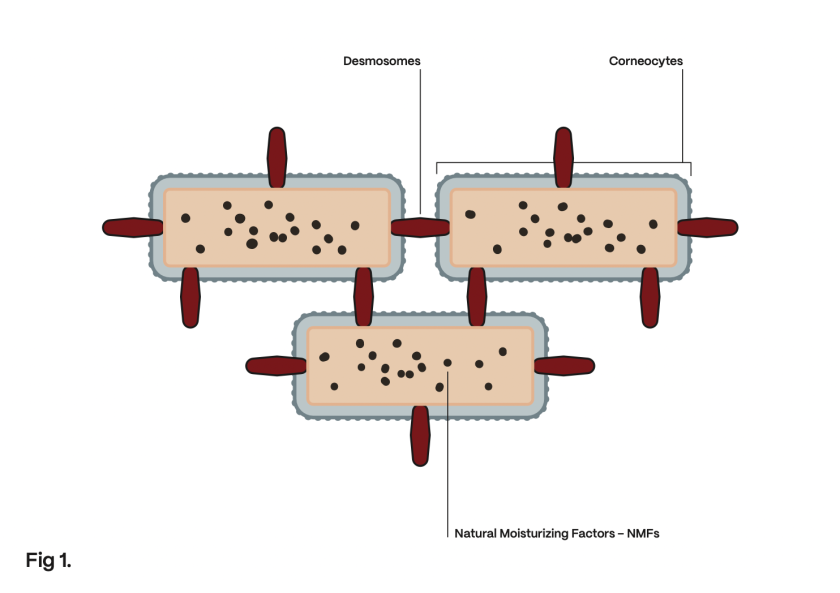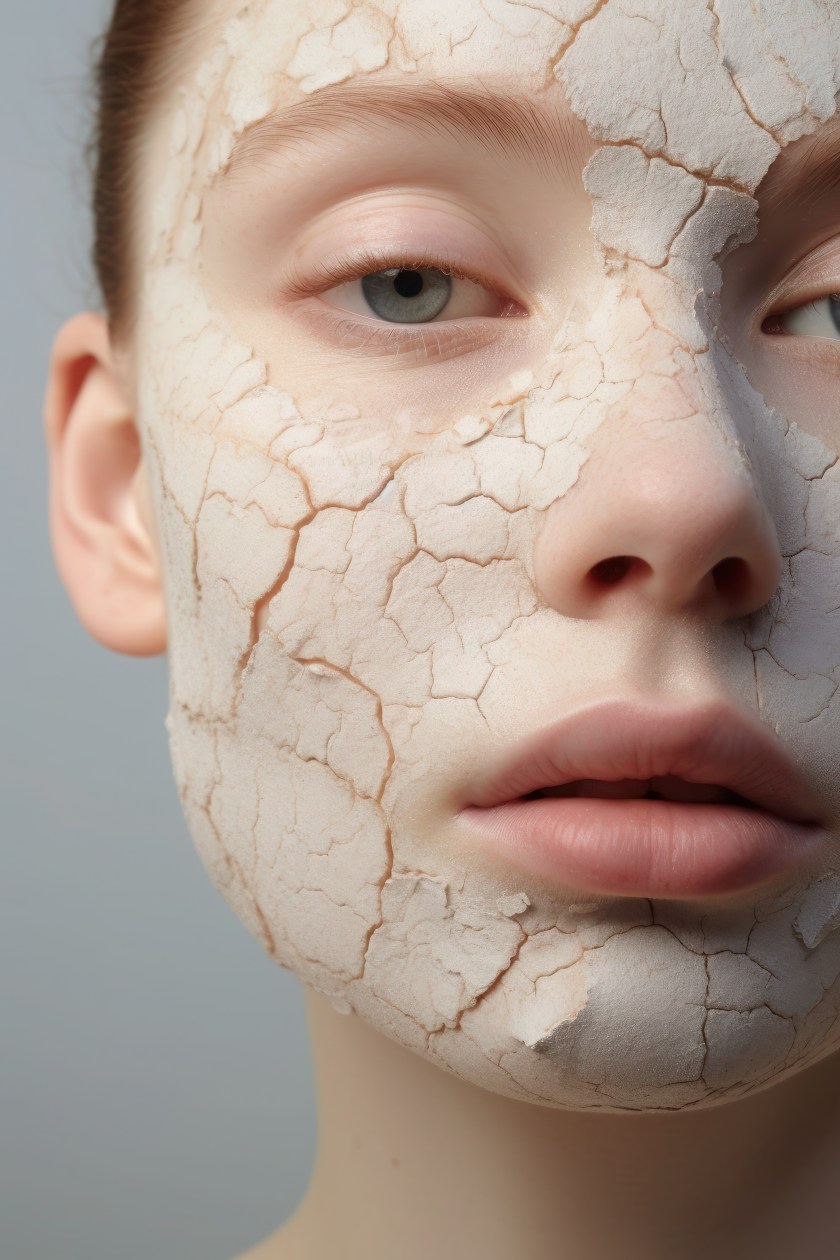Paul Fister wants you to rethink what you want in a cleanser.
In 2006 we visited a skin clinic in Wollongong to educate the team in our philosophy, our products and our treatments. The salon owner was very excited about our creams. However, she was not convinced about our cleansers. When asked why, she responded: “The cleansers from my previous range are great. After using them my skin feels squeaky clean and tight. I miss that feeling with your cleansers.”
We asked the salon owner to cleanse her skin with our cleanser. She then followed up by applying our toner to a cotton pad and wiping over her face. The cotton pad did not show any trace of make-up so clearly the cleansing had been successful. However, the ‘squeaky clean and tight’ feeling was missing.
We explained that this tight feeling is in fact a sign that her skin is struggling. Tight skin is the second symptom of dehydration of the skin. What happens? For corneocytes to be healthy they must have a minimum water content of 15%. Two functions of our skin combine to ensure that this level is maintained.
The hydro-lipidic barrier
The hydro-lipidic barrier is the skin’s principal defence against excessive moisture loss. It slows TEWL (Trans Epidermal Water Loss) to a level that balances moisture lost from the epidermis with the moisture gained from the dermis. This barrier relies on oils from sebum for its effectiveness.
The hydro-lipidic barrier is assisted in its task by the so-called Natural Moisturising Factors (NMFs). These are hydrophilic (i.e. they love water) chemicals – amino acids, urea, sodium, pyrrolidone carboxylic acid and more. Some of them are products of the breakdown processes when keratinocytes differentiate into corneocytes. Others arrive at the corneocyte from our sweat.
The oils form the ‘mortar’ that surrounds the corneocytes on all sides. NMFs are found inside the corneocytes where they on the one hand attract water and on the other hand bind that water inside the corneocyte. They combine with the hydro-lipidic barrier to slow water loss to natural healthy levels, ensuring that the moisture content of the corneocyte does not fall below the critical 15% barrier.
Our skin should be cleansed with a gentle cleanser that causes minimal disruption to the skin’s hydro-lipidic barrier. Some cleansers are formulated to strip sebum out of the skin because the formulators of the product believe that ‘sebum serves no known purpose’. These cleansers literally destroy the skin’s hydro-lipidic barrier, leading to an immediate and significant increase in TEWL. The skin goes from dehydrated to tight in a matter of minutes. Why do we get this tight feeling that was actually welcomed by the therapist we were instructing in our products?
The graphic below, Fig 1, illustrates the process. The first graphic shows corneocytes with 15%+ moisture content. They are protected by the hydro-lipidic barrier against excessive moisture loss. They also contain NMFs which bind moisture inside them. They are bound together with desmosomes ensuring an orderly brick-like alignment. This is the structure that forms the formidable outer barrier of our epidermis.

The second graphic below, Fig 2, illustrates the consequences of a disrupted barrier due to removal of oils during the cleansing process. To make things worse, the cleanser has leached some of the NMF substances out of the corneocytes. Trans-Epidermal Water Loss increases, the moisture level inside the corneocytes drops below the critical 15% level. Anything that loses moisture also loses volume – think of plum and prune. As the corneocytes shrink, the desmosomes pull and tug on them. This is the reason for the tight feeling of the skin. A well formulated cleanser will cause minimal disruption to the skin’s hydro-lipidic barrier. The leaching of NMFs will be kept to a minimum.

The dangers of dehydration
Our skin, its structure and functions are a wonderfully balanced, intricate system. It is very resilient and can mostly recover quickly from any challenges we might throw at it. It will reward us with a healthy glow provided we respect its integrity and support it in its ongoing quest for homeostasis.
A simple action like washing or splashing your face with pure water can be sufficient to disrupt the skin’s delicate balance. It can leach the water loving/water soluble NMFs out of the skin. A few minutes later the consequence can be a tight feeling of the skin. If you have experienced this you now know how and why this happens.
Dehydrated, tight feeling skin can be quickly alleviated with the application of an oil-based cream that is formulated to mimic the skin’s natural hydro-lipidic barrier. TEWL is normalised, the water content of corneocytes returns to its minimum of 15%. The skin regains its healthy appearance, redness and inflammation are alleviated.
The dangers of dehydration to the health of the skin are underestimated. In our education we emphasise the sequence ‘dehydration – inflammation – oxydation’. Disruption of the hydro-lipidic skin barrier leads to failure of the ‘inside-out’ protective function of the stratum corneum. The corneocytes experience increased TEWL (dehydration). This leads to tightness of the skin to the point where small fissures develop in the stratum corneum. The ‘outside-in’ protective function of the stratum corneum is now compromised. The skin’s immune system is alerted leading to inflammation with its typical sign – redness (rubor in latin). Inflammation leads to the formation of free radicals (oxidation). Finally, these processes lead to the formation of self-destruct enzymes that destroy collagen, elastin and hyaluronic acid.
A client visiting a professional skin therapist should never experience any of the five signs of skin dehydration. The best solution for this condition is a biomimetic oil-based moisturiser.
Paul Fister is the Owner of OmniDerm and distributor of Dr Spiller in Australia and New Zealand.
For more information, visit www.dr-spiller.com.au.
Dr. Spiller is distributed in Australia by OmniDerm Pty. Ltd
51-53 Tinning Street, Brunswick VIC 3056
T: 03 9645 0200
E: admin@omniderm.com.au

